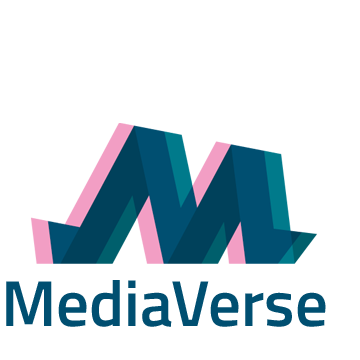In a virtual world that is more and more “centralised”, where “big” media platforms impose their conditions, MediaVerse aspires at defining an open decentralised platform, free from imposed fees and with strong Intellectual Property (IP) protection. This leads to cheaper prices for final users, which in our vision will trigger a virtuous circle: more sales, more revenues, more contents, more sales, and so on.
In the long term, this is a “win-win” solution for:
- consumers, who get lower purchase prices, a wide range of contents based on the latest technologies and the opportunity to directly reward the favourite creator, without “big” media platforms intermediations;
- creators, who benefit from lower fees, innovative content creation technologies, a wide range of embeddable contents, strong IP protection and semi-automatic licensing for an easier networking with other creators;
- media providers, who can access a wider range of traditional and innovative contents, with fair and clear licensing;
Thanks to the harmonious integration of several innovative technologies, MediaVerse aims to propose a seamless solution to these user categories.
These users, together with potential adopters and technology enthusiasts, will now have the opportunity to follow a series of dedicated blog posts which will describe the technologies involved in MediaVerse.
This first Blogpost focuses on the technology behind the IP protection and revenues management: the Blockchain.
Blockchain
Transactions such as payments, escrow, notarisation, voting, registration, and process coordination are critical in the operations of government and industry. Traditionally, these transactions are supported by trusted third parties such as government agencies, banks, legal firms, accounting firms, and service providers in specific industries. These are all centralised institutions. Blockchain provides a different way to support these transactions. Blockchain is an emerging digital technology that combines cryptography, data management, and networking, representing a subset of the Distributed Ledger Technologies (DLTs).
A distributed ledger is an append-only store of transactions distributed across many machines. In other words, new transactions can be added, but old ones cannot be deleted or modified. A new transaction might reverse a previous transaction, but both remain part of the ledger to allow auditability and ensure long-lasting integrity.
We can define a blockchain as a distributed ledger structured into a linked list (‘chain’) of groups (‘blocks’) of an ordered set of cryptographically signed transactions. A blockchain uses cryptographic hashes to secure the link from a block to its predecessor. A hash refers to a pre-defined consensus protocol shared across nodes in the network. The consensus must be reached among the nodes to guarantee the integrity of the shared contents of the blockchain ledger. As new blocks are added, older blocks become more difficult to modify (i.e., creating resistance against tampering). Public key cryptography and digital signatures are used to identify accounts and to ensure the integrity and authorisation of transactions initiated on a blockchain.
Blockchain technology was originally used for Bitcoin. With the advent of the second most popular blockchain platform, Ethereum, transactions can record code, variables, and the results of function calls. These features are called “smart contracts”. Smart Contracts (SCs) are programs deployed as data in the blockchain ledger and executed in transactions on the platform. These can hold and transfer digital assets managed by the blockchain and invoke other SCs previously stored. Once deployed, SC’s code is deterministic and immutable. SCs offer valuable benefits, being less prone to human errors, requiring no intermediaries, providing automation, and enabling new business models. [1]
[1] Qureshi, A., & Megías Jiménez, D. (2020). Blockchain-Based Multimedia Content Protection: Review and Open Challenges. Applied Sciences, 11(1), 1. https://doi.org/10.3390/app11010001

